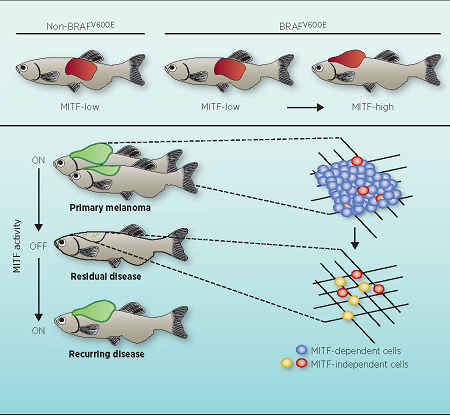XDF Programme Fellow published papers in physics and biomedicine journals
One of our XDF Programme Fellows, Dr Ava Khamseh, contributed to exciting research publications in “Physical Review B” and “Cancer Research”: November 2019

The Cross-Disciplinary Fellowships [XDF] Programme at the University of Edinburgh (UoE) partners the MRC Institute of Genetics & Molecular Medicine (IGMM) with the School of Informatics (SoI) to maximise new cross-disciplinary opportunities in scientific discovery at the Life Sciences/ Computational interface, and their translational and innovation impact. It is led by a panel of directors including Professors Chris Ponting (MRC Human Genetics Unit/IGMM), Margaret Frame (Cancer Research UK Edinburgh Centre/IGMM), Tim Aitman (Centre for Genomic and Experimental Medicine/IGMM), Ian Tomlinson (Cancer Research UK Edinburgh Centre/IGMM), Guido Sanguinetti and Jane Hillston (both from SoI), who are supported by Dr Arkadiusz Welman (Cancer Research UK Edinburgh Centre/IGMM) acting as scientific administrator. The Programme has been designed to recruit analytically minded people from disciplines such as physics, mathematics, computer sciences and similar, to help solve some of the most challenging problems of contemporary biomedical research. The first recruits joined the XDF Programme in 2018, with second cohort recruited in 2019 and third group joining in 2020. It is most satisfying to observe their integration with the scientific community in Edinburgh as well as multiple productive collaborations resulting from Fellows’ interactions with colleagues in IGMM and across the University.
One of the main objectives of the Programme is to train the fellows in biomedical sciences while at the same time helping them to nourish knowledge and skills they had already gained from their previously studied disciplines. This is hoped to be achieved through carefully designed collaborations and joint projects with people from informatics, physics and similar fields of research. Recently, one of the XDF Programme Fellows, Dr Ava Khamseh, published two very interesting papers in high impact journals from different disciplines – physics and cancer research. She achieved it by working with two separate teams on very different topics using both numerical and biomedical methodologies - suggesting perhaps, that the XDF Programme approach to cross-disciplinarity might be working well.
The first study, titled “Machine learning determination of dynamical parameters: The Ising model” and published in the journal “Physical Review B”, was performed in collaboration with investigators from Higgs Centre for Theoretical Physics at the University of Edinburgh, Alan Turing Institute in London and Ascent Robotics in Tokyo. The study uses machine learning (training of a set of restricted Boltzmann machines on one- and two- dimensional Ising spin configurations at various values of temperature, generated using Monte Carlo simulations) to develop new approaches for data distribution analysis. It forms the foundation for further investigations of interactions between variables in biological systems. Notably Ava has been designated one of the corresponding authors for this work.
The second study, titled “Zebrafish MITF-low melanoma subtype models reveal transcriptional subclusters and MITF-independent residual disease” and published in the journal “Cancer Research”, identified novel cell states in melanoma progression and residual disease. Melanoma is the deadliest type of skin cancer with almost 16,000 new cases every year in the UK and the study used state-of-the-art high-resolution imaging combined with single cell gene expression analysis to understand these new cell states for the first time in a complex living system. The study, led by Dr Elizabeth Patton from IGMM, involved research institutions from Australia, Belgium, Iceland, USA and UK (including IGMM’s MRC Human Genetics Unit and CRUK Edinburgh Centre).

